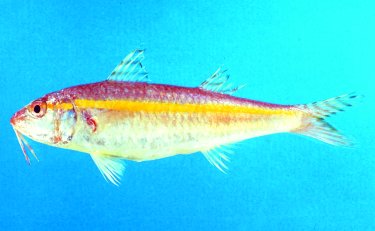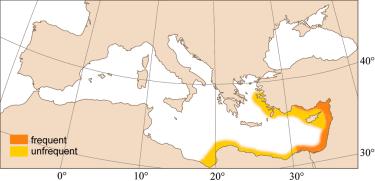
|
Relevant synonyms
Misidentification
Meristic formula
|
|
| photo: David Darom |
|
SHORT
DESCRIPTION
color :
back pinkish-red; belly white. A distinct single longitudinal yellow stripe running from eye to caudal fin base. Upper caudal fin lob striped.
size :
common 7 - 20 cm (max. 27 cm). |
DISTINGUISHING CHARACTERISTICS
BIOLOGY / ECOLOGY
habitat :
benthic. Sandy or muddy substrate to 100 m (single record at 200 m). |
|
1st
MEDITERRANEAN RECORD
|

|
|
DISTRIBUTION
|
ESTABLISHMENT SUCCESS
speculated reasons for success :
|
|
|
MODE OF
INTRODUCTION |
IMPORTANCE TO
HUMANS |
|
KEY
REFERENCES
|
|
 Upeneoides moluccensis
Upeneoides moluccensis